Chefchaouen – Morocco’s acclaimed “Blue City” – is a real charmer! Prepare to have your heart stolen as you walk its winding small lanes lined with white-washed buildings painted in every imaginable shade of blue. This small town is nestled in the foothills of the beautiful Rif mountains. In fact, its name aptly means “Look at the peaks!”
With its dramatic hill-side setting & jumble of blue buildings, Chefchaouen is one of Morocco’s prettiest towns. In addition, it is laid back and peaceful & the people are warm and welcoming. Located in the country’s north, Chefchaouen is a perfect introduction to Morocco. Not to mention, your dollar or euro (or whatever) will go far here!
Morocco itself has become a hot destination for travelers, because it offers so much in the way of great sights, fascinating history & culture, beautiful scenery, and delicious cuisine. However, most tourists hit Morocco’s “big name” destinations like Marrakesh, Fes, Tangier and Casablanca.
Since Chefchaouen is more “off the beaten path,” it’s not quite so overrun with tourists – yet! However, this small mountain town is really coming into its own as a highly desirable travel destination. So, it’s no longer a well-kept secret – partly because of people like me sharing its many charms.
My Trip / What I’ll Share in This Post
My long-held desire to tour Morocco in depth finally became reality this past fall, when 13 friends and I signed up for an Overseas Adventure Travel (OAT) tour of Morocco. However, the main tour did not include Chefchaouen. Since I had seen those mesmerizing photos on Instagram, I knew the “Blue City” was a must see.
So, we put together our own independent visit to Chefchaouen before meeting up with the formal tour. We spent three nights there at the end of October, giving us two full days of touring. And, yes, we all fell hard for the “Blue City” – it was everyone’s favorite town in Morocco! This was despite having unusually cold & wet weather during our short time there.
In this blog post, I share highlights of all the great things Chefchaouen has to offer its lucky visitors. Besides my words, the photos will really tell you the bigger story because this “Blue City” is a visual feast for the eyes & a photographer’s dream. My camera & I were both in heaven!
The Medina (Old City)
Chefchaouen’s insanely picturesque medina is where visitors will spend most of their time. And, happily, most everything is within easy walking distance. Chefchaouen is a small town – its total population is just over 40,000, with 18,000 people living within the old medina.
The old city is a fascinating mix of Moroccan and Andalucian-style architecture with red-tiled roofs, bright-blue buildings, narrow lanes and colorful flower pots. Plus, the town cascades down the hillside. Be warned – you’ll certainly get your exercise as you trek up and down the different hilly sections.
As you wander the medina, you’ll see a mix of both tourists and locals who are going about their daily lives. In fact, many local people still live in the medina. Apparently, that is because foreigners haven’t really been able to purchase old houses and convert them to upscale riads (hotels) – unlike what has happened in Marrakesh, Tangier and Rabat.
- Local men – young and old – relaxing by the Kasbah
- Credit: Ed Lofdahl
With its peaceful, relaxed feel, Chefchaouen offers a wonderfully authentic experience of local Moroccan life here in the Rif mountains. The men and women all wear traditional clothing, usually long flowing outer robes (Djellaba/jalaba or cafthan). Men often wear the robe’s pointy head up (photo above right), while women wear head scarves.
Quick History of Chefchaouen
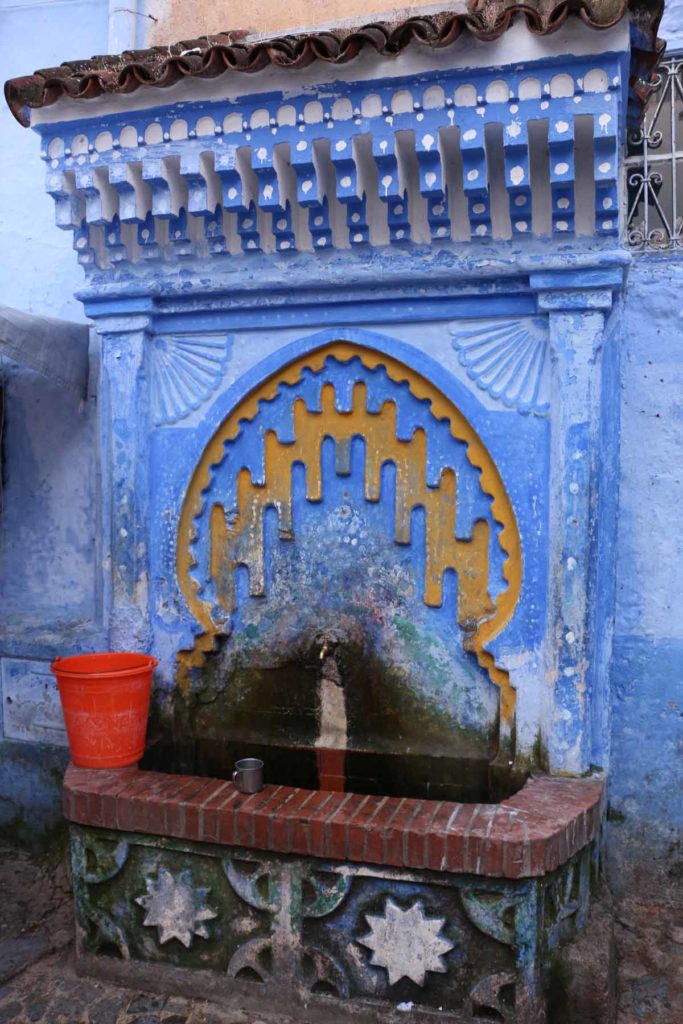
In 1494, the town began to expand with the arrival of Muslim (the Moors) and Jewish refugees from Granada (in southern Spain’s Andalucia region) who were fleeing the Spanish inquisition. They built the Spanish-styled whitewashed houses, with their tiny balconies, tiled roofs and patios – much of which remains today.
Centuries later in 1920, the Spanish captured Chefchaouen, forming part of Spain’s territory in Morocco. The city was given back when Morocco gained its independence in 1956. So, common languages you’ll hear in this area are Moroccan Arabic, Spanish, English and Berber. Welcome to multi-cultural Morocco!
Exploring the Old Medina
Undoubtedly, the highlight of any visit will be the time spent wandering the narrow lanes and cobblestone streets of the old city. In fact, Chefchaouen’s relatively small and uncrowded medina is perfect for meandering. It’s easy to explore, yet there’s still plenty of winding paths to keep it interesting.
It’s so much fun to explore and see what cool sights you can discover just around the next corner. And a special treat for cat lovers like me – the town is awash in adorable kitties who practically “own the streets!”
Luckily, the medina is compact enough that you’ll never get too lost. This, however, is in stark contrast to the huge, labyrinthine medinas of Fes & Marrakesh, where getting hopelessly lost is the norm!
Plaza Uta el-Hammam / The Grand Mosque
- Credit: Wikimedia Commons / Fshaidar
- Credit: Wikimedia Commons / Carlos ZGZ
This large main plaza is the heart of the old medina & where you’ll find lots of action. Lined by sidewalk cafes and restaurants, Plaza Uta el-Hammam is a perfect place for taking some needed rest from all that walking. Plus, it’s great for people watching as you sip a mint tea & chow down on local cuisine. From here, you can also enjoy beautiful mountain views.
At one end of the plaza is the town’s Grand Mosque. Like all of Morocco, Chefchaouen is predominantly Muslim. Built in the 15th century by the son of the town’s founder, the mosque is particularly noteworthy for its unique octagonal minaret. The mosque is only open to Muslims. However, everyone can enjoy the beautiful calls to prayer which sound five times a day from the minaret.
- Chefchaouen’s Grand Mosque & octagonal minaret
- Credit: Deposit Photos
The Kasbah
The main entrance of the red-hued Kasbah is also found on the Plaza Uta el-Hammam. This heavily restored old walled fortress now contains an Andalusian garden and a small museum – the Ethnographic Museum (also known as the Kasbah Museum). Apparently, the museum signage is only in French & Arabic. There’s even a small art gallery within the museum.
There is a fee to enter the Kasbah, so I opted not to go inside. However, I did get a quick peek at the pretty gardens as I stood by the ticket window, assuring the woman that we were “just looking.” However, once inside, you can climb up one of the Kasbah towers for great views over the town and surrounding countryside.
Our Tour of the Medina
Our first morning, we took an excellent 3-hour guided tour of the medina with Abdeslam Mouden of Rif Walks. The walking tour was a great introduction to Chefchaouen and perfect orientation to the old city. It made it much easier to wander around on our own afterwards.
Abdeslam has been a professional tour guide all around Morocco for years. Plus, he’s from the area, so he was a delight & a wealth of information. He now operates his own locally-focused tour company & travel agency, Rif Walks, which also includes hiking tours.
On our walk, he pointed out the town’s communal bakery (below), where breads are baked in a wood-fired oven. It is run by one man, the baker. Local people make their own bread dough at home and bring it here to have him do the actual baking for a small fee.
- Credit: Ed Lofdahl
- The Communal Bakery
Origin of the Blue City Hues
There are many different theories about the history behind Chefchaouen’s distinctive blue hues. It may have begun in the 15th century with the initial influx of Jews escaping the Spanish Inquisition, who brought their tradition of painting buildings blue. Another source said it was not until 1760 when the Sultan commanded the creation of a mellah (Jewish quarter) in the old city.
Others say that a wave of Jewish immigrants in the 1930s (fleeing the Nazis) was responsible for adding more vibrant blue colors to the city. Perhaps, some neighbors close to the mellah liked the blue and decided to follow suit, starting a trend that spread from home to home?
- Credit: Ed Lofdahl
- Love these doors!
I will add that our guide Abdeslam said that blue-washing the buildings has only taken place the past 20 years. So…regardless of which “blue origin story” is correct, there is no question that attracting tourists is now a major reason why the practice continues. Chefchaouen has certainly gained fame for being the beautiful “Blue City.” And, what a beautiful city, indeed!
- Credit: Ed Lofdahl
Abdeslam also told us the painting of the homes used to be done by the women. But since women weren’t able to use ladders, the blue paint only extended part way up the white walls. Now, it’s men with ladders who do all the painting. It must keep them very busy, since each building has to be re-painted three times each year!
Shopping in Chefchaouen
Chefchaouen is also a great town for shopping. Visitors will find a wide range of merchandise from the typical tourist trinkets to higher quality items found in the nicer boutique shops. And, what makes it such a joy is that most shopkeepers here are relaxed and low key. You definitely won’t feel pressured like you often will in the more intense marketplaces like Marrakesh and Fes.
I didn’t do much shopping, but many of my friends happily supported the local economy. They bought a wide range of items, including handmade Moroccan leather slippers and artisan soaps made in the city. Their favorite store was a soap & scent shop called La Botica de la Abuela Aladdin, which was highly recommend in one of their guide books.
Ras el-Maa “Waterfall” & Riverside Walk
My guidebook talked about the Ras el-Maa waterfall, located outside the medina walls to the east. So, two friends & I went on a hunt to find this most touted waterfall. Turns out, the falls by themselves were quite underwhelming but still interesting.
- Credit: Wikimedia Commons/YoTuT
- Credit: World of Waterfalls blog
Ras el-Maa means “head of the water.” In fact, the source of the water feeding the stream and falls is a natural mountain spring. A concrete path parallels the stream a short distance up to a city building that sits protectively over the spring (above left). Our day, just a small amount of water was flowing out from under the building. But photos like those above (from others) show the water flows more at other times.
- Credit: World of Waterfalls blog
- Credit: Wikimedia Commons/ Ben Bender
This mountain stream then flows over a few small cascades before coming out by a public area near the upper bridge. This is a popular gathering place for the locals (above). Here you might see women doing their laundry, friends catching up on the latest gossip, or kids playing in the stream. There are two covered shelters where women can do their wash.
From here, you can take stroll along a pretty riverside path on the eastern side of the river. The route has been nicely landscaped including some playful public art. Carol, Lynn & I enjoyed this short walk of no more than half an hour. The path ends at the Portuguese stone bridge in the lower part of town, just past an old flour mill. From here, you can make a right turn and head back up into the medina.
Hike to the Spanish Mosque
Not far from the medina, the Spanish Mosque with its distinctive white minaret sits on a hilltop. The mosque was built by the Spanish in the 1920s, but never used. The entire mosque has recently been restored, but apparently it is not open for worshippers. One source even said there were plans to open it as a cultural center.
- Credit: Wikimedia Commons/ Alexey Komarov
- Credit: Deposit Photos
As you might imagine, the main attraction of the Spanish Mosque are the stunning views to be enjoyed from its terrace. Get your cameras ready! It’s an uphill hike (less than 30 minutes) to get there, but the panoramic views of Chefchaouen and the green valley below are definitely worth the effort.
- Credit: Ed Lofdahl / both photos
- Credit: Ed Lofdahl
Lodging / Where We Stayed
Over the recent years, Chefchaouen has rapidly gentrified from being primarily a backpacker destination. The town now offers a good range of quality accommodation, including many riads (typical Moroccan hotel) within the old medina.
We actually stayed just outside the medina at a wonderful guesthouse – Riad Dar Echchaouen. The key selling point was its great hillside location, with gorgeous views of the whole medina from its pool & patio area (below). What a perfect place to sit and watch the sunset at the end of a busy touring day!
- Credit: Deb Deshais
- Credit: Ed Lofdahl
My group opted for the suite rooms, which were very reasonably priced. Our rooms with their Moroccan décor were great, and each one was different. The entire staff (including managers Abdul & Karim) could not have been more friendly, fun and helpful. Dar Echchaouen caters both to individual travelers and small groups only. Plus, there is a nice restaurant.
Casa Hassan
Another place I can personally recommend is Casa Hassan, located inside the medina (near the main plaza). Casa Hassan (also called Dar Baibou) recently expanded and is now located across the street from its well-acclaimed restaurant of the same name.
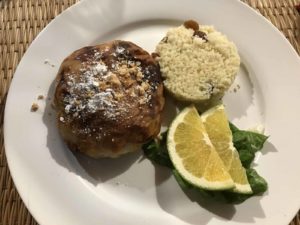
Speaking of restaurants, we had an excellent dinner at Casa Hassan one of our nights. We enjoyed a 3-course meal for 95 dh (Moroccan dirhams) – about $10 – plus drinks & tip. I had a delicious chicken pastilla (photo). It’s a very popular place so reservations are recommended.
Hiking in the Rif Mountains
The forested Rif mountain area around Chefchaouen is also known for some great hiking, including in the nearby Talassemtane National Park. Apparently, there are a variety of day hikes, from casual to more challenging, as well as multi-day hike options. So, when our local guide Abdeslam of Rif Walks suggested a day hike that our group might like, we jumped at the chance.
The hike was planned for the next day, but unfortunately, heavy rains forced us to cancel. Darn! But, here was the plan. Starting at our hotel, a local guide would lead us on a 4-hour hike into the nearby mountains to reach a small village hamlet, where we would enjoy a local lunch. We would then return to Chefchaouen by 4×4 vehicles. The cost was going to be 375 dh/ per person (around $40). That was in 2018, so price has likely increased since then.
My Lonely Planet Morocco guidebook actually lists Rif Walks in the hiking section – saying “Abdeslam and his team of 13 trained guides lead treks lasting from half a day to several days in both parks.” So, it looks like both Lonely Planet & I recommend Abdeslam Mouden & Rif Walks. You can reach Abdeslam via the Rif Walks website or the nice 7-room riad he operates in the old medina – Riad Dar Meziana OR directly via email at rifwalks@gmail.com.
 Final Remarks
Final Remarks
So now you can see why the “Blue City” enchants all its visitors with its picturesque medina and the many interesting things to see & do. If you are planning a visit to Morocco anytime soon, I hope you’ll include Chefchaouen in your itinerary. Ideally, you’ll want to spend at least 3 nights (or more!), giving you 2 full days for exploration and enjoying all of its charms.
How to Get to Chefchaouen
Chefchaouen is a definitely off the Moroccan beaten path. So, you’ll need to do some research to figure out the best way to get yourself there. For my group of 12, we pre-arranged private transport from Casablanca (our arrival city) to Chefchaouen – and 3 days later, to Rabat where we started our formal tour.
This excellent travel research website – Rome2Rio – is a great place to start. I use this site all the time! Their Tagline: Discover how to get anywhere by plane, train, bus, ferry & car.
Here are approximate drive times (not including stops):
- Casablanca to Chefchaouen – 6 hours
- Rabat to Chefchaouen – 4 hours
- Tangier to Chefchaouen – 2 to 2.5 hours.
Caution About Photographing People in Chefchaouen
Chefchaouen is a photographer’s dream, to be sure. However, I quickly found that most of the local people did not want their photo taken, which I respected. Of course, it was a different story when I had developed a relationship with someone, like our tour guide or staff at the hotel or a friendly riad owner we chatted with. They were usually more willing to pose, when asked.
Here’s an excerpt from an excellent Intrepid Travel article that describes the situation well. The article is entitled: Pro Photography Tips: Taking Portraits in Morocco.
For example, for cultural reasons many people in Morocco aren’t keen on being photographed. More specifically though, they really object to people photographing them without permission. Although the people of Morocco are fabulously welcoming and friendly, they are also quite traditional. Over the past few decades tourism has taken off in the country, and they have been flooded by countless camera-toting tourists; many of whom think that they have some absolute right to stick a camera in someone’s face and take a picture without asking. The result is often friction.
Want to know more about Magical Morocco?
Check out my blog post about my wonderful 3-week Tour of Morocco: Morocco Journey Highlights – Why This Exotic Country Will Charm & Fascinate
COMMENTS: Have you visited Chefchaouen and/or Morocco? How was your experience? Is the Blue City on your list?

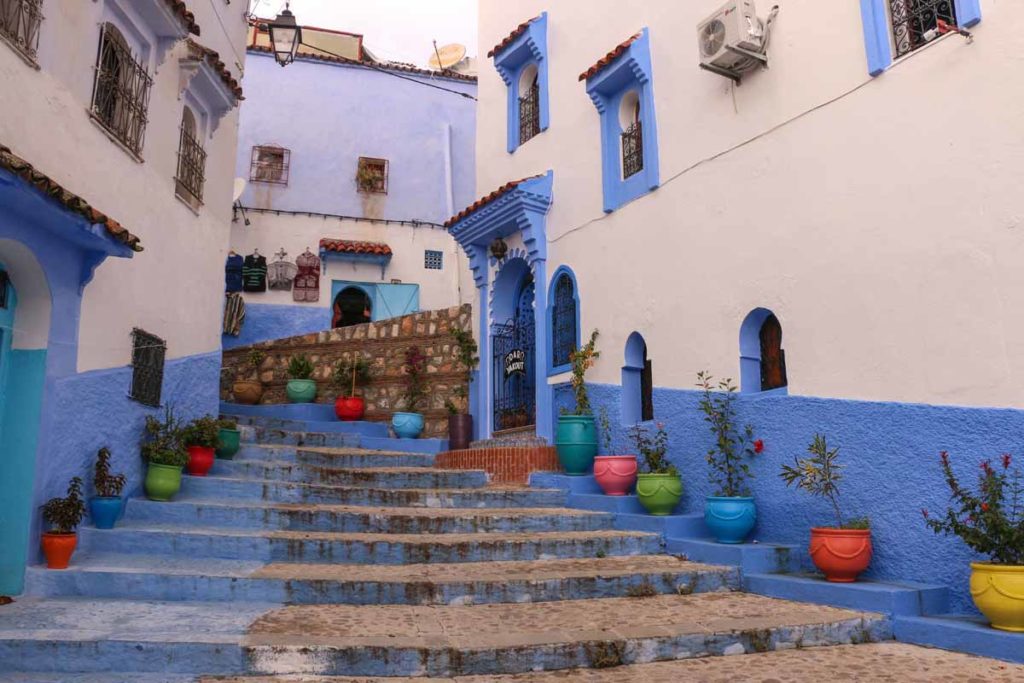
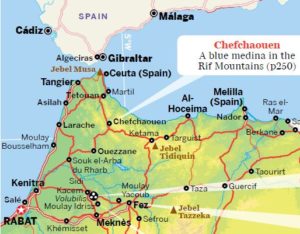
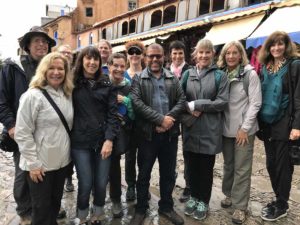
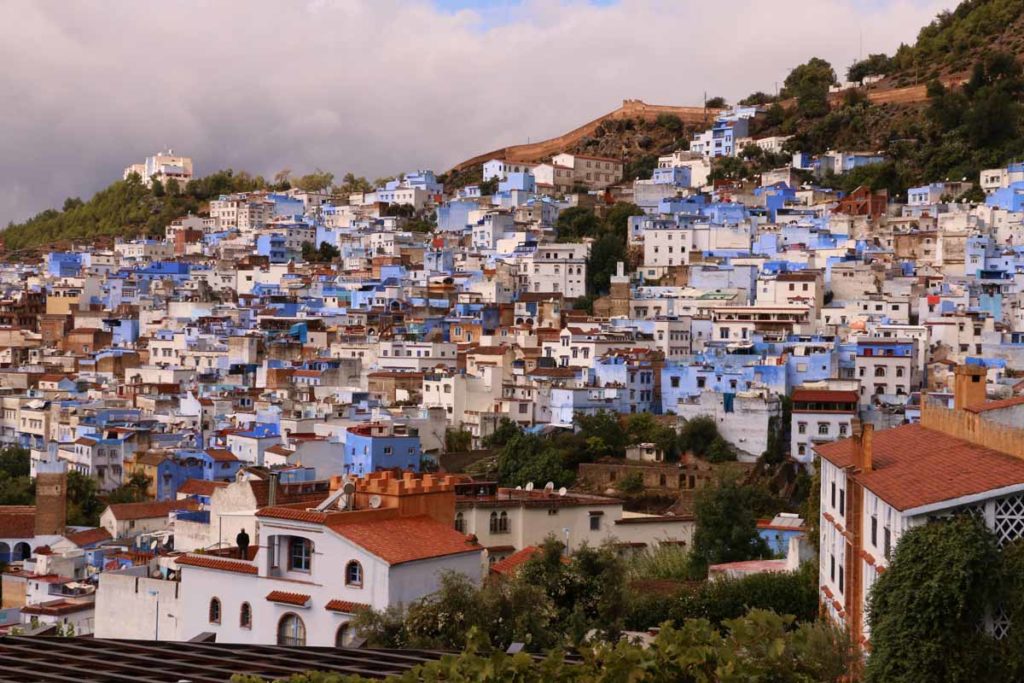
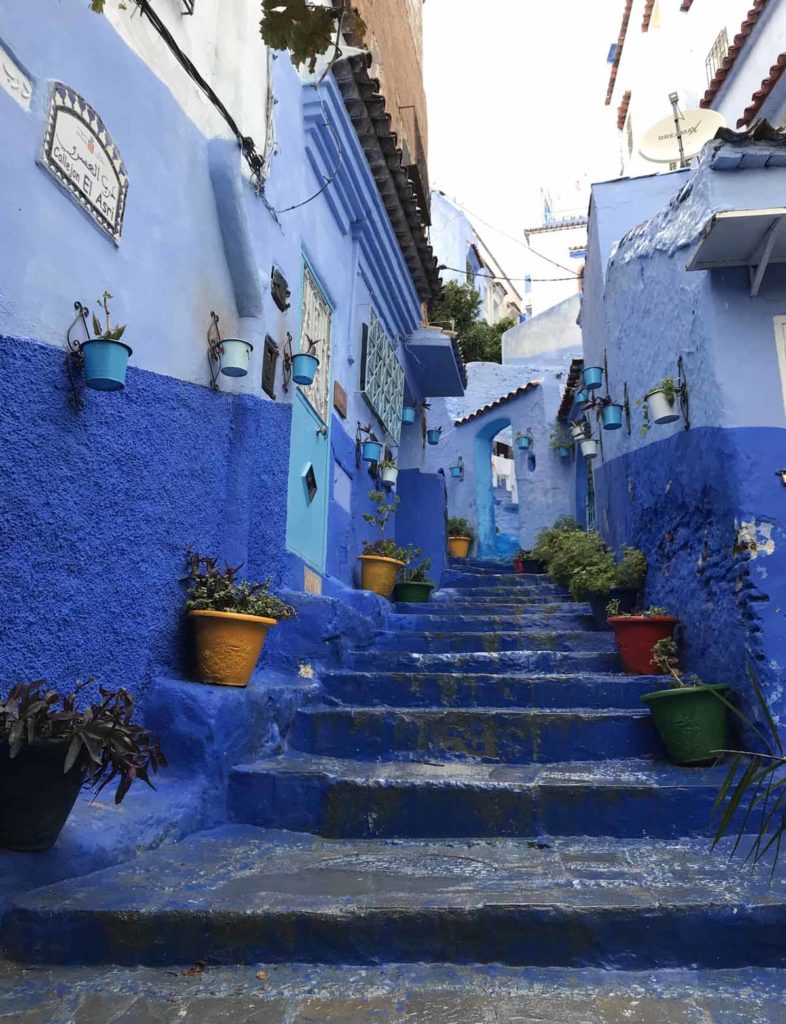
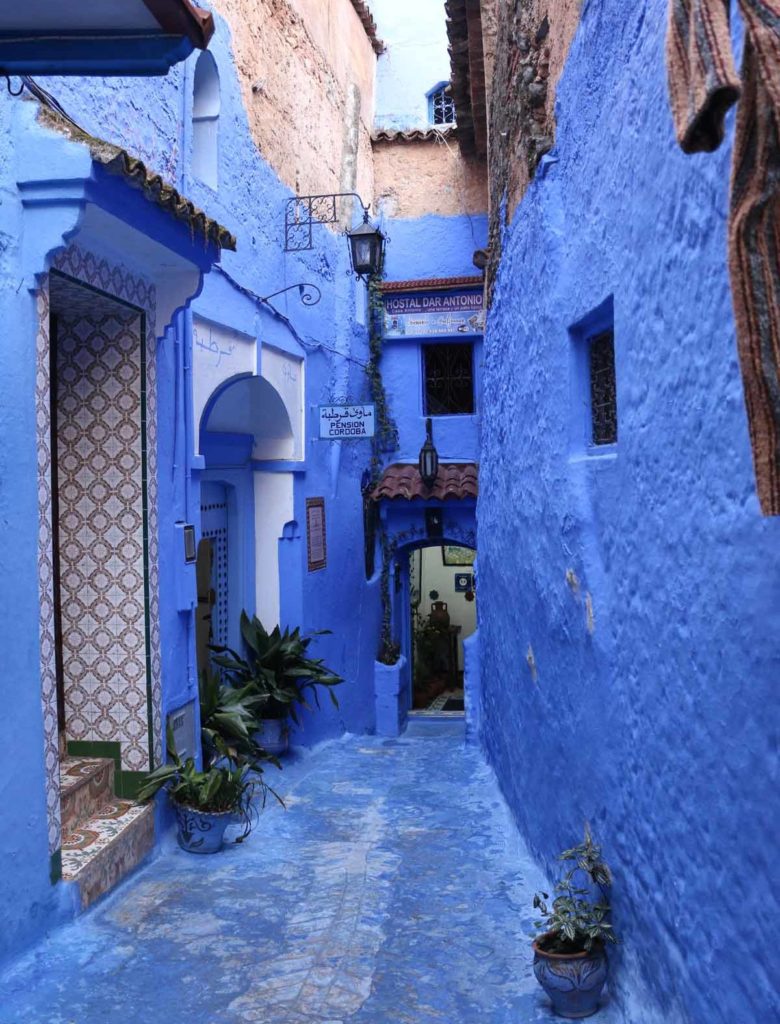
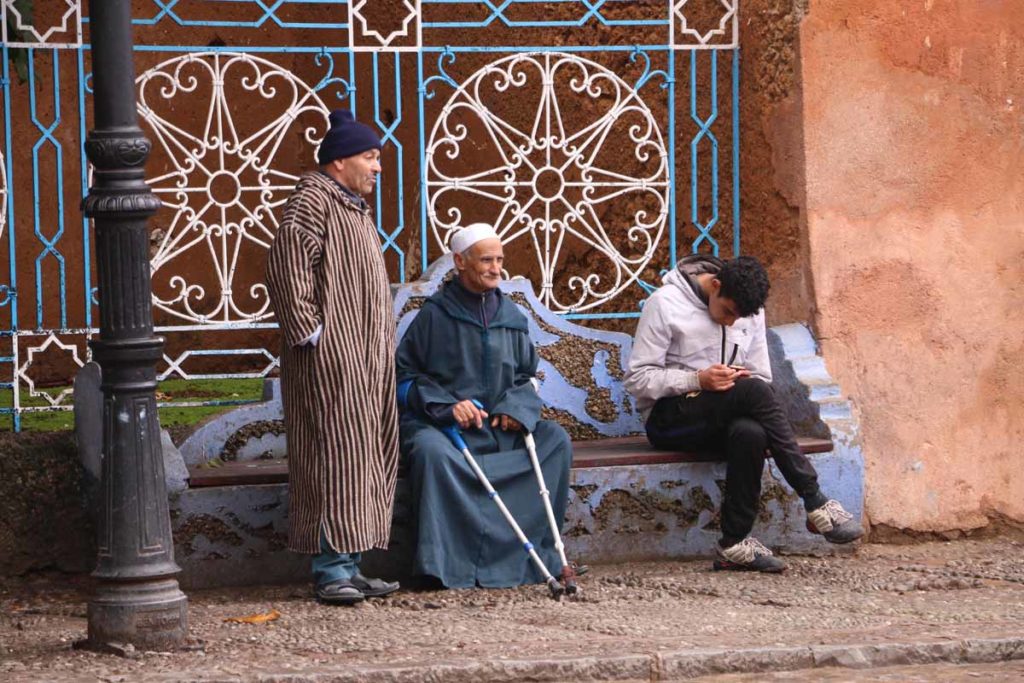
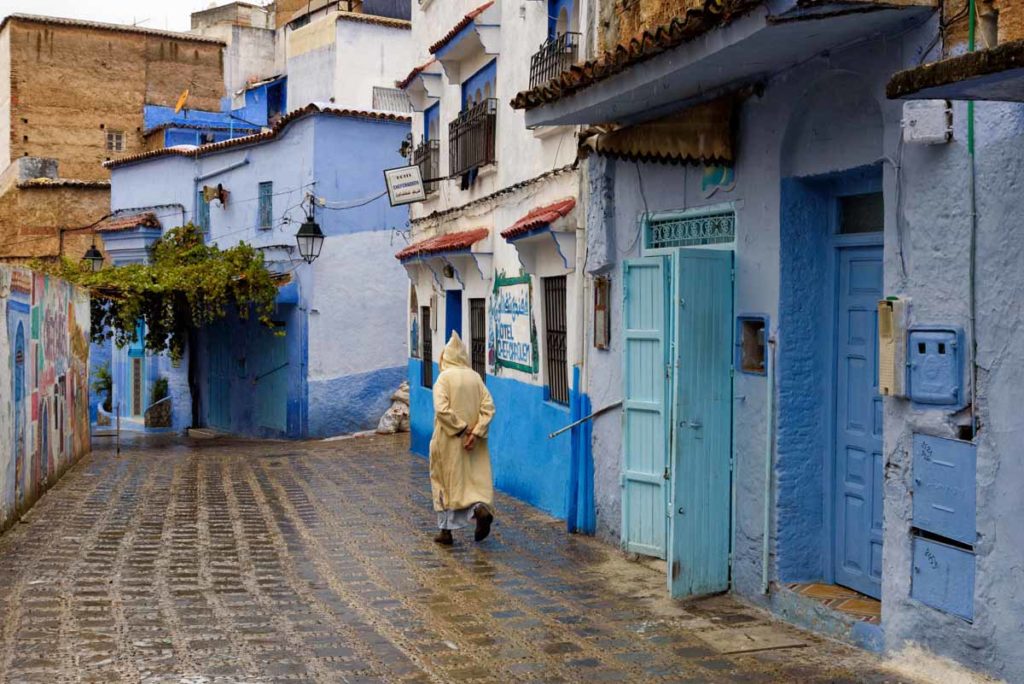
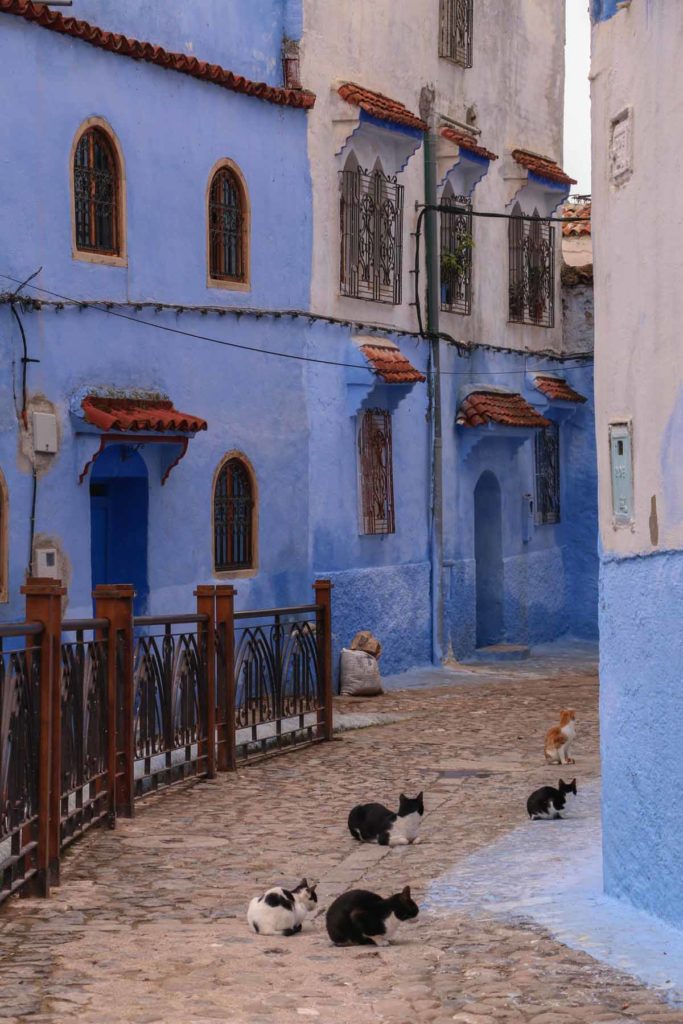
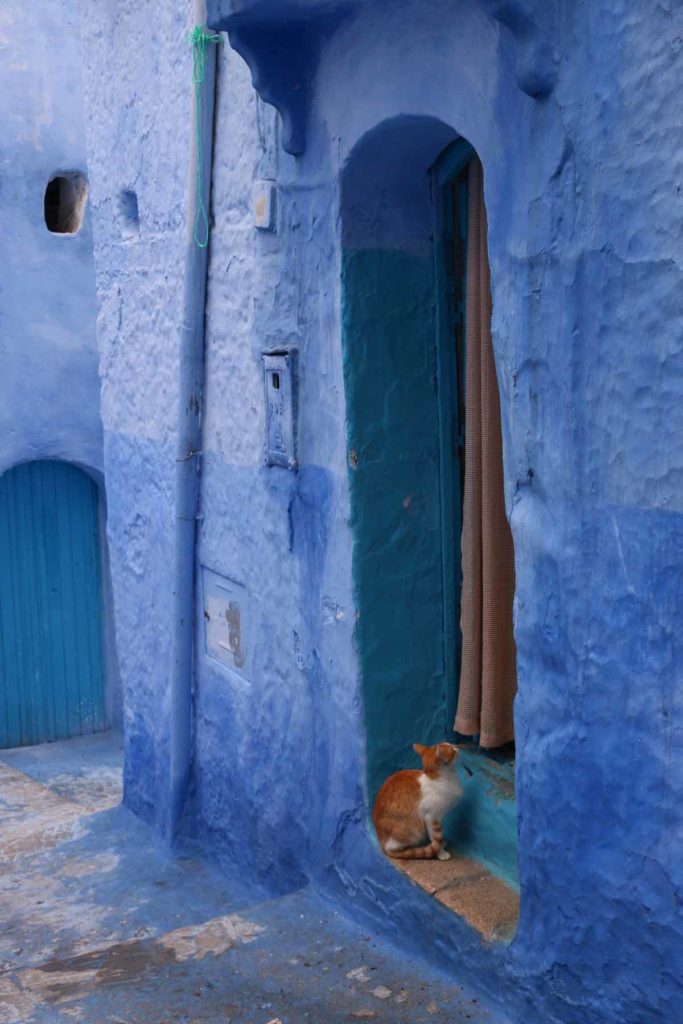
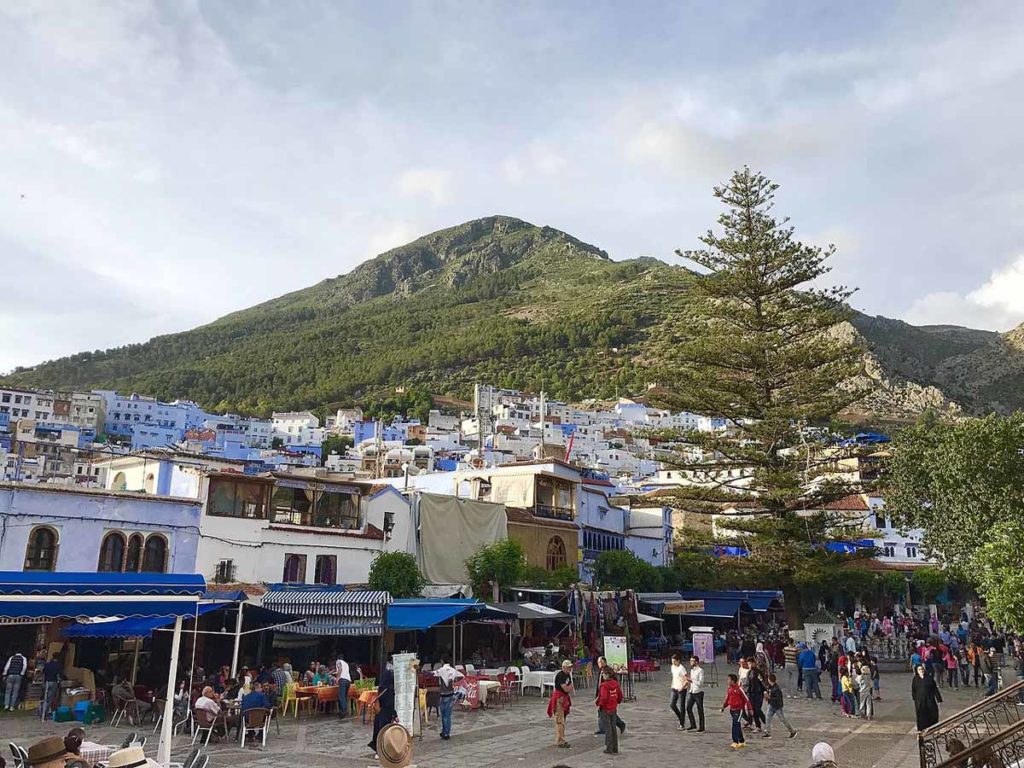
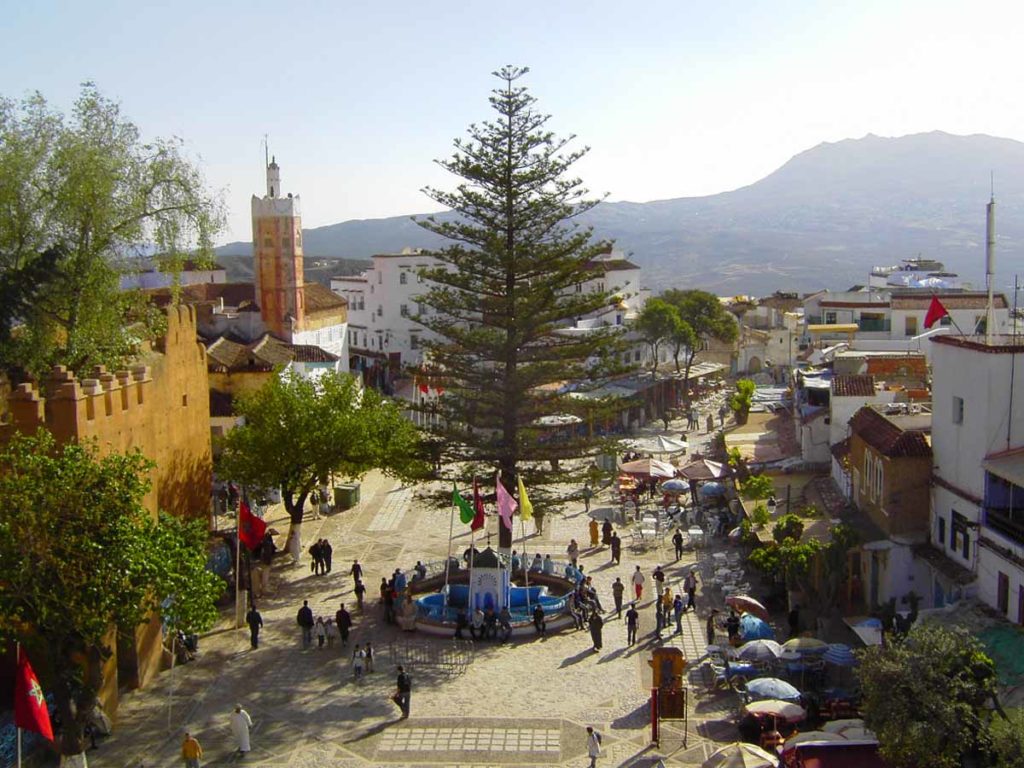
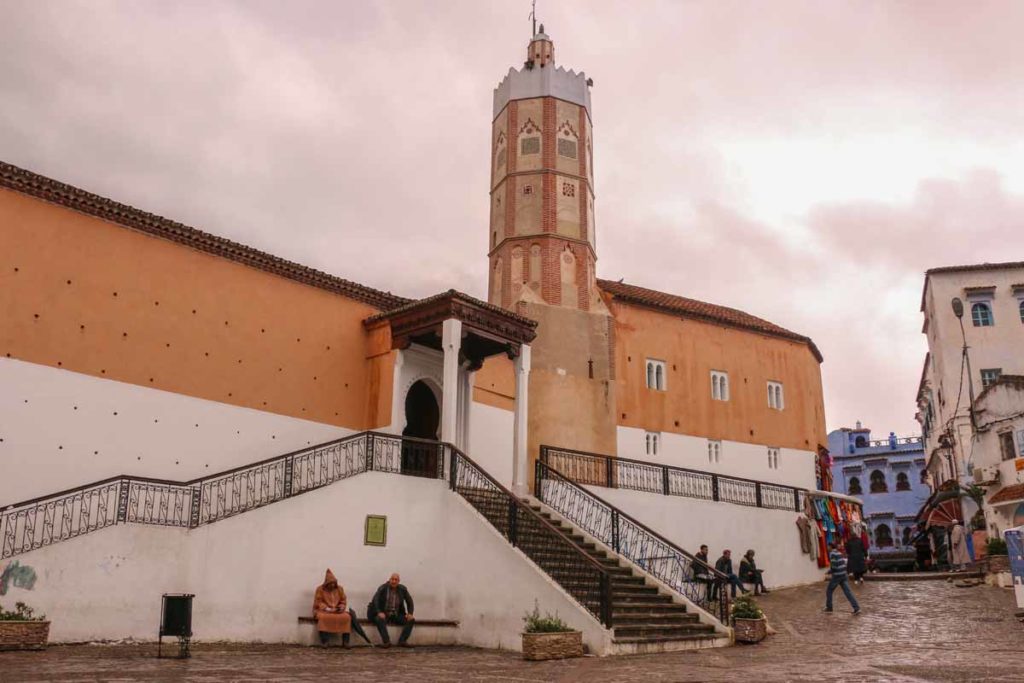
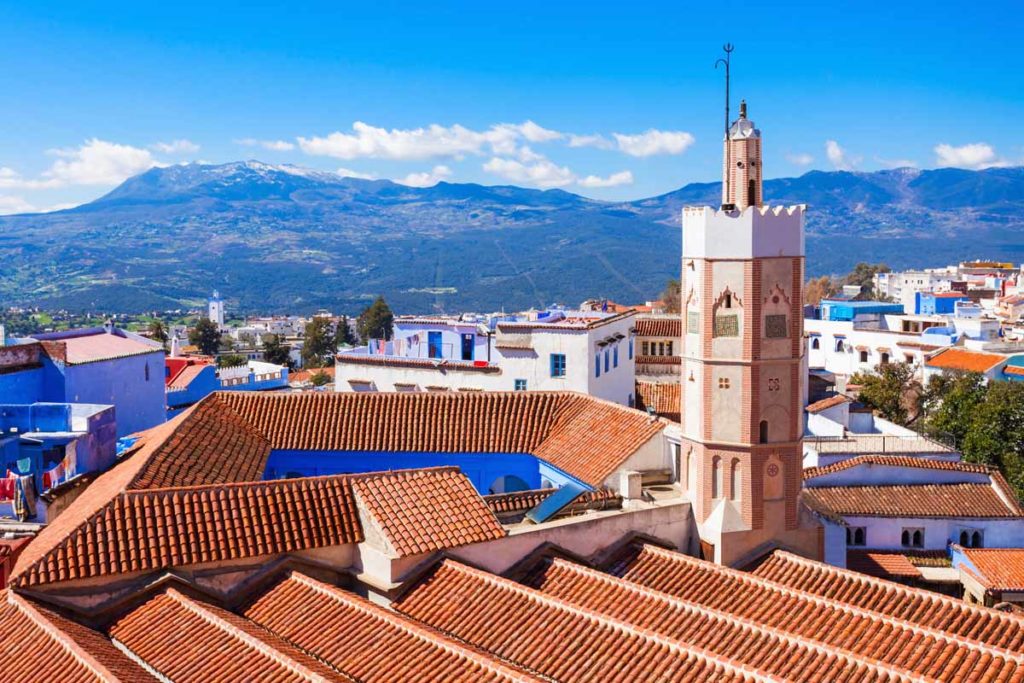
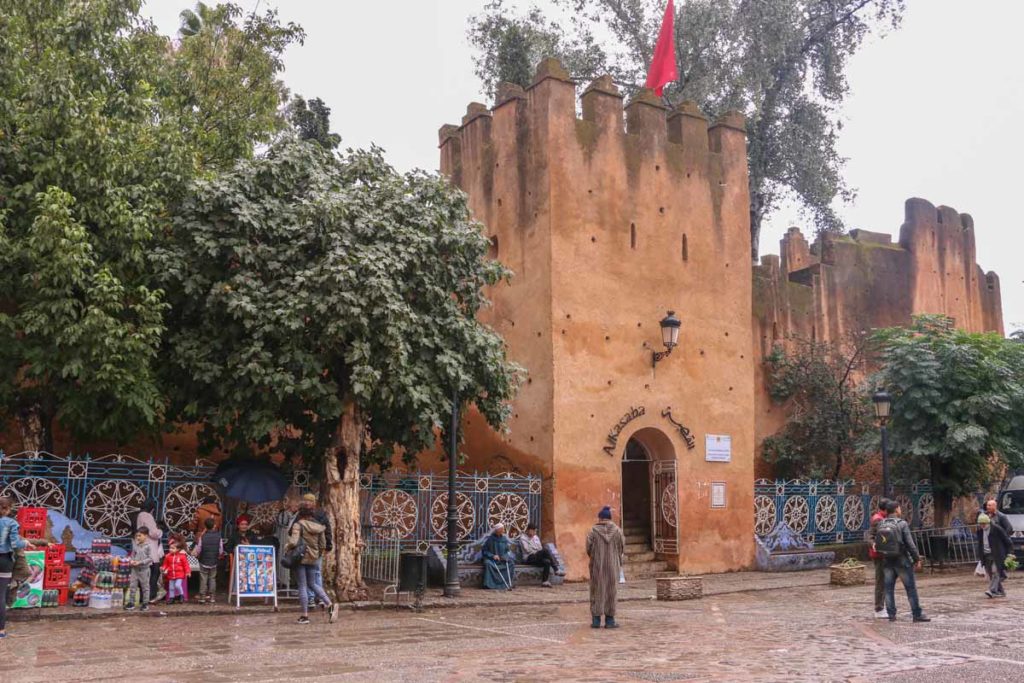
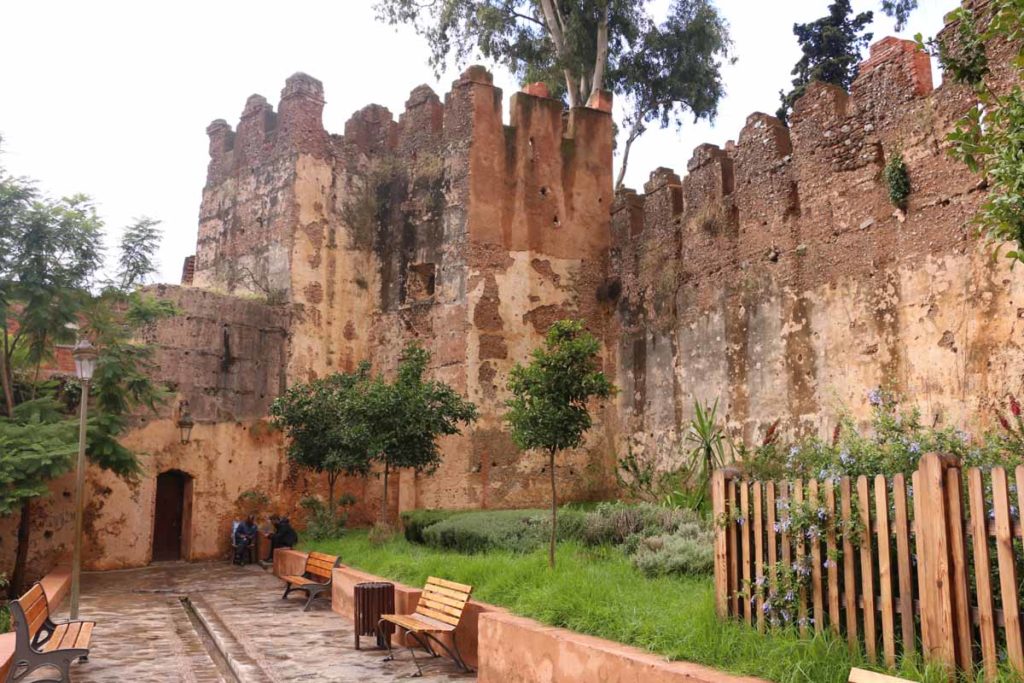
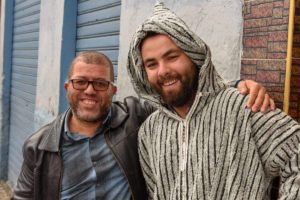
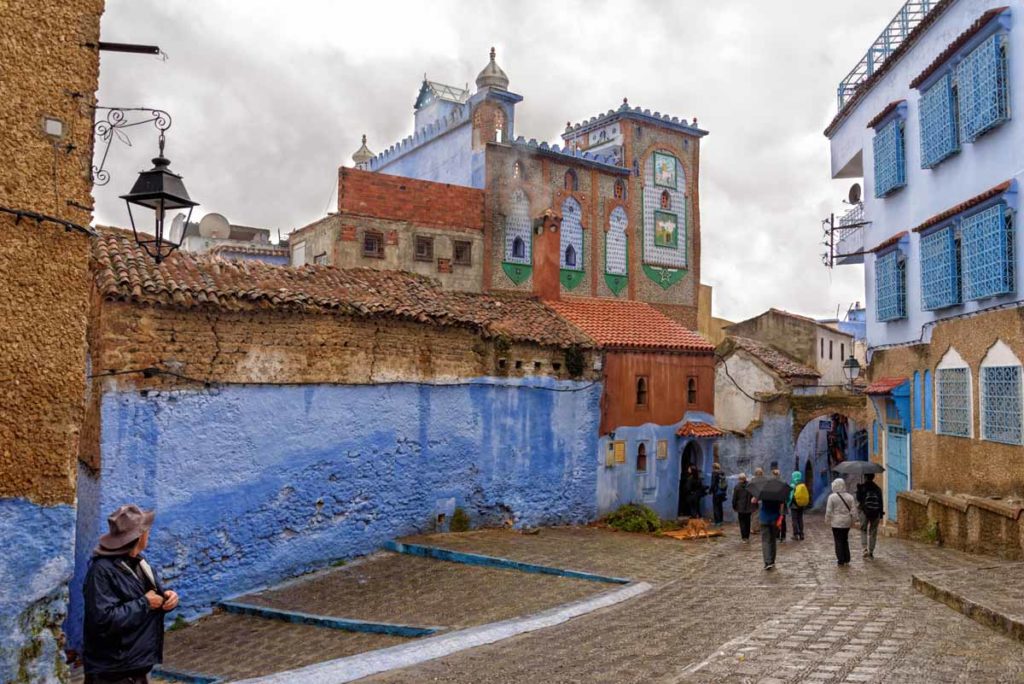
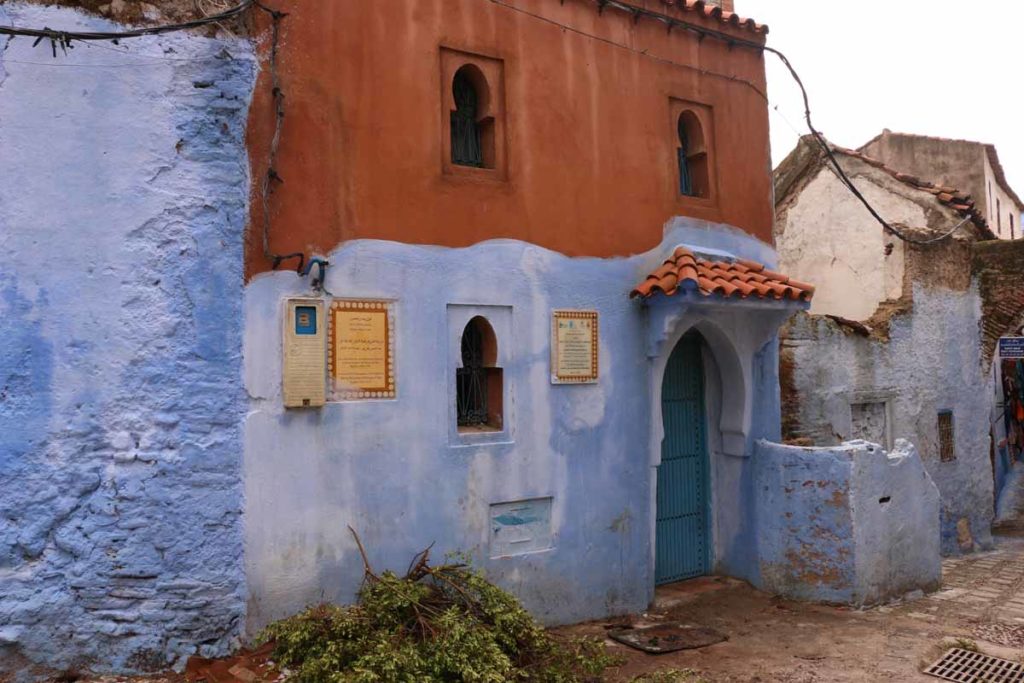
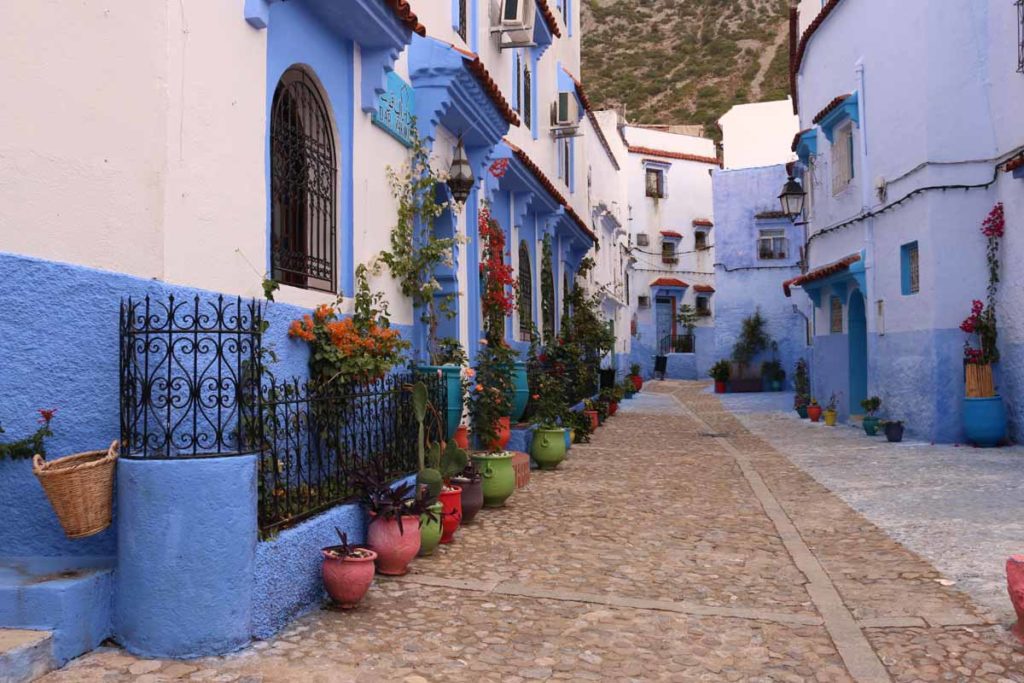
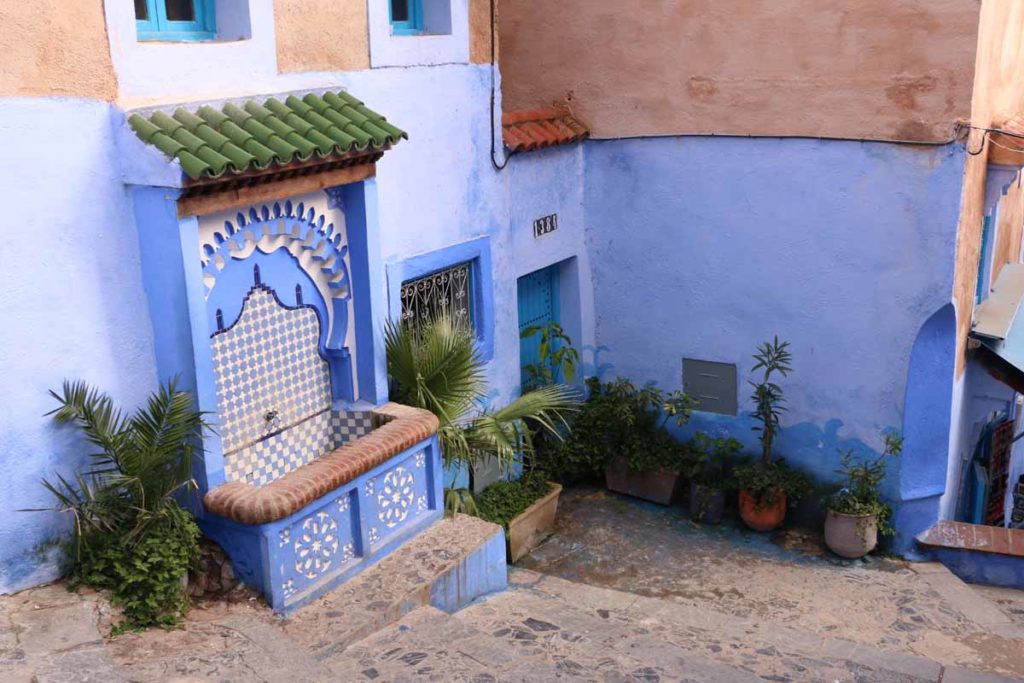
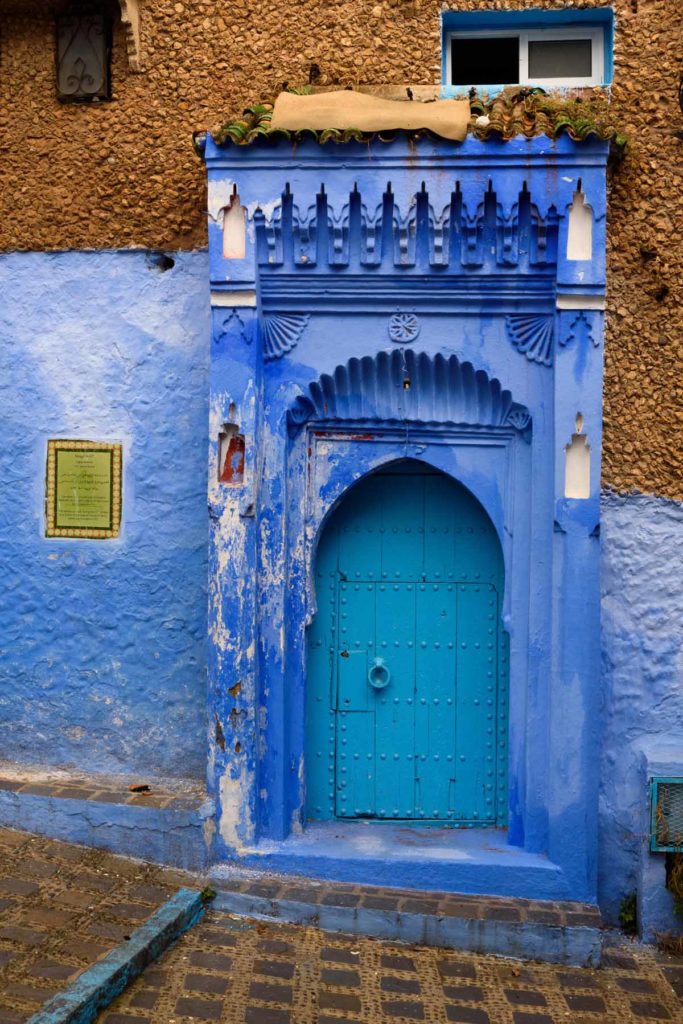
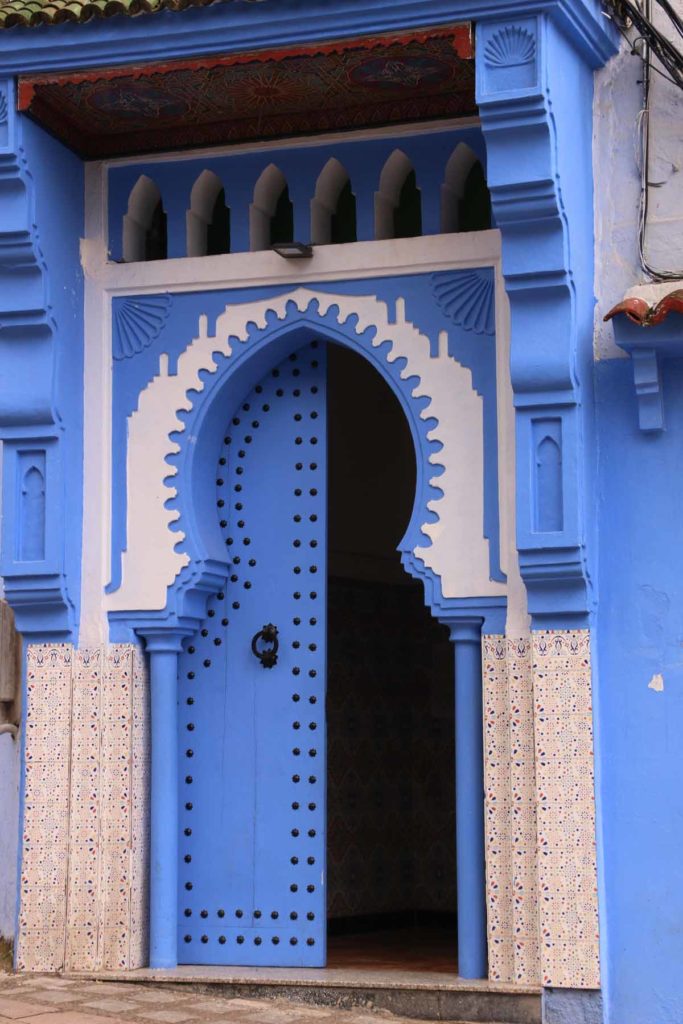
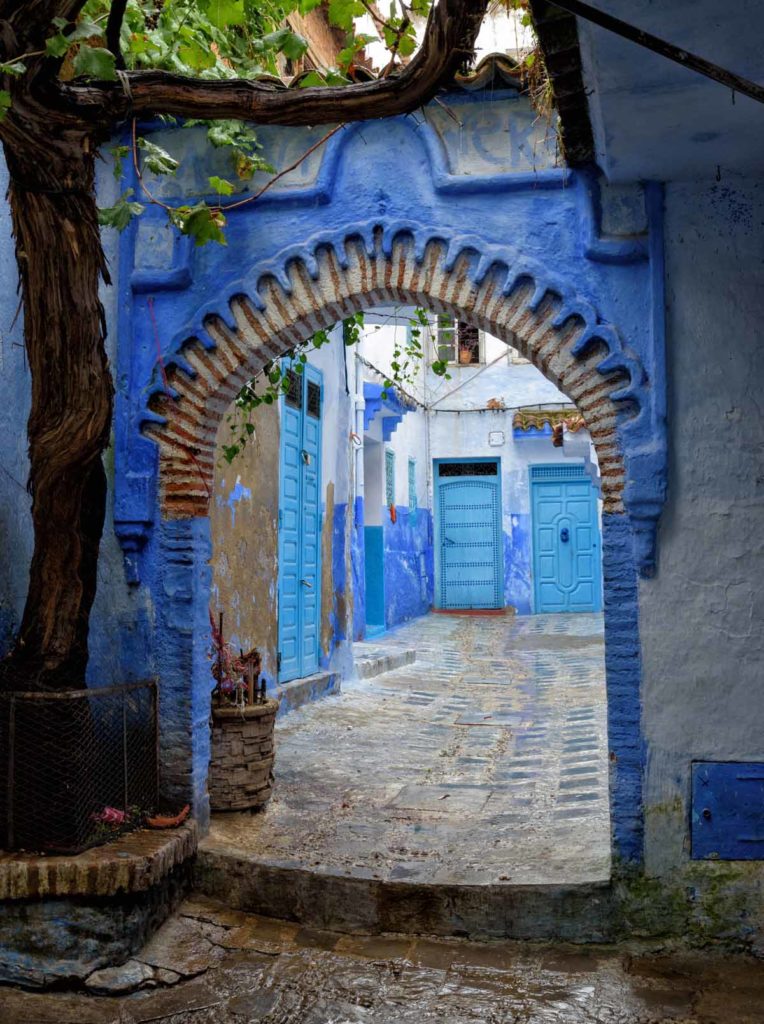
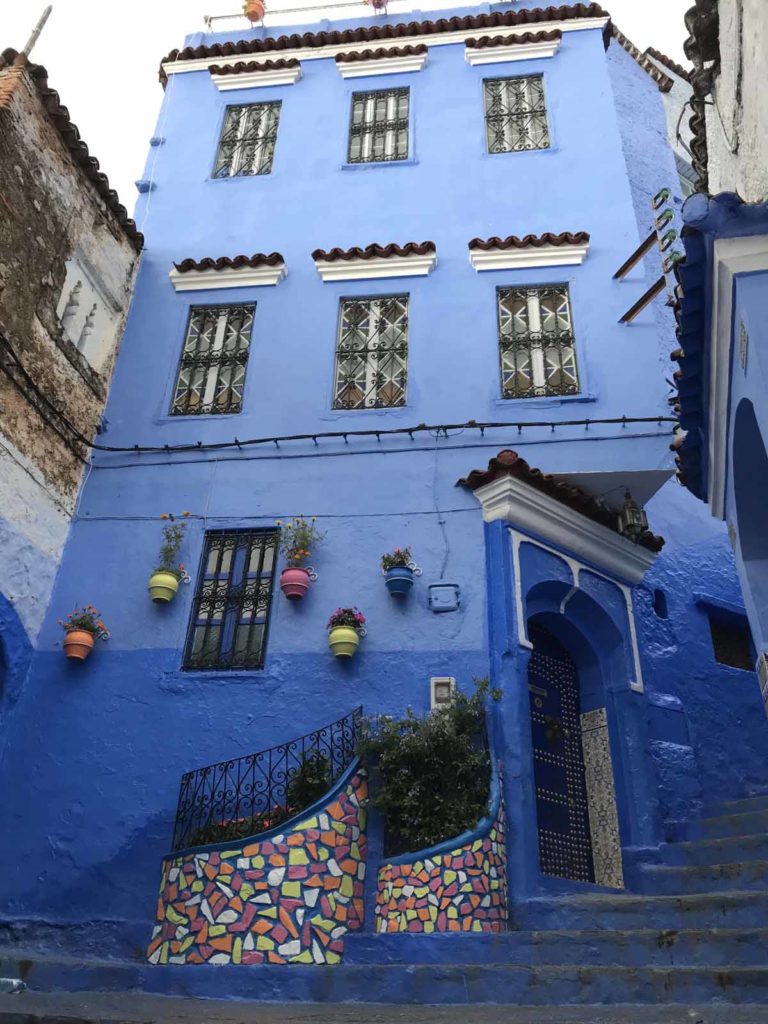
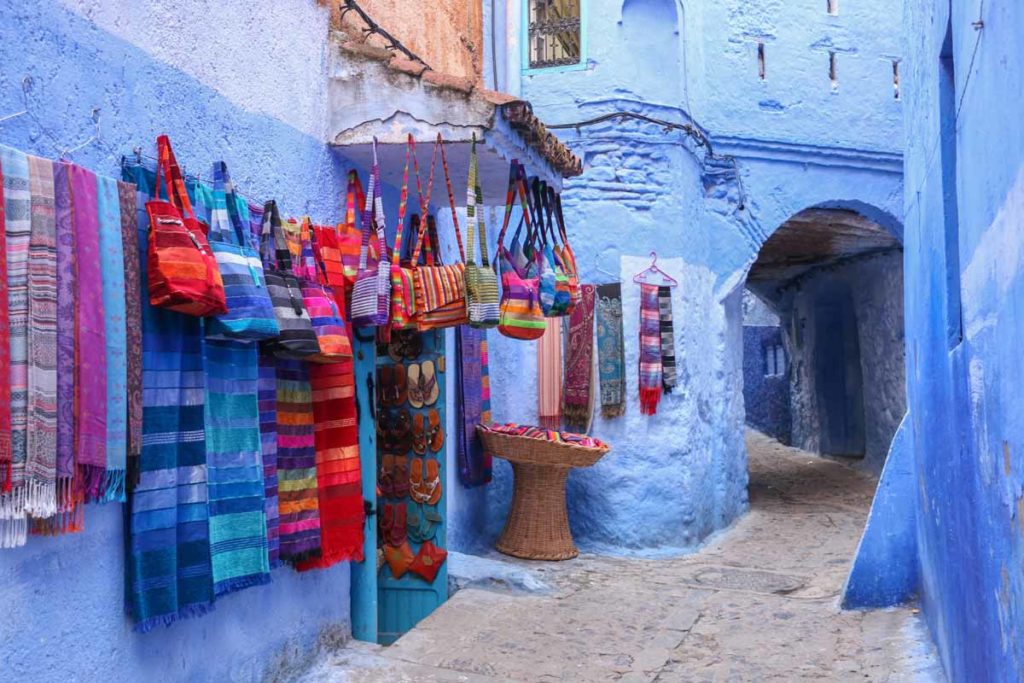
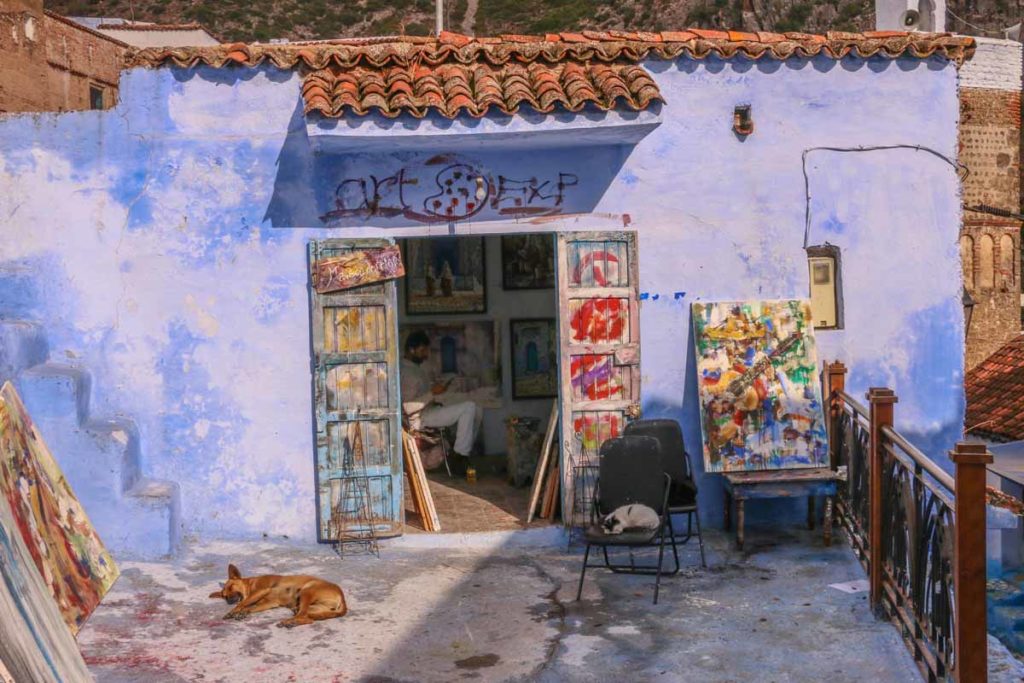
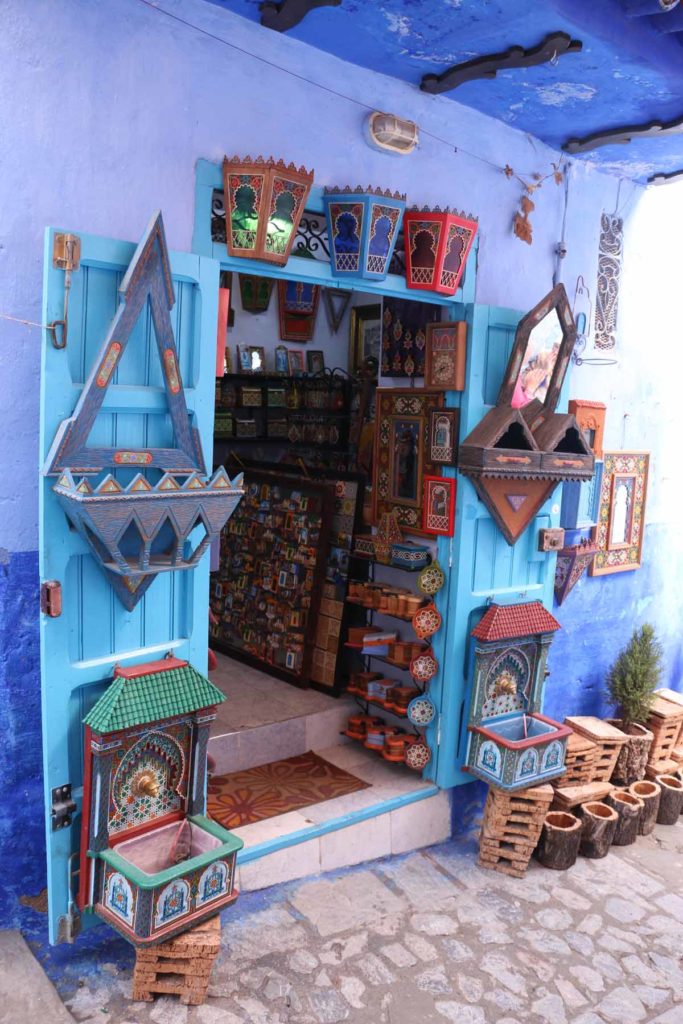
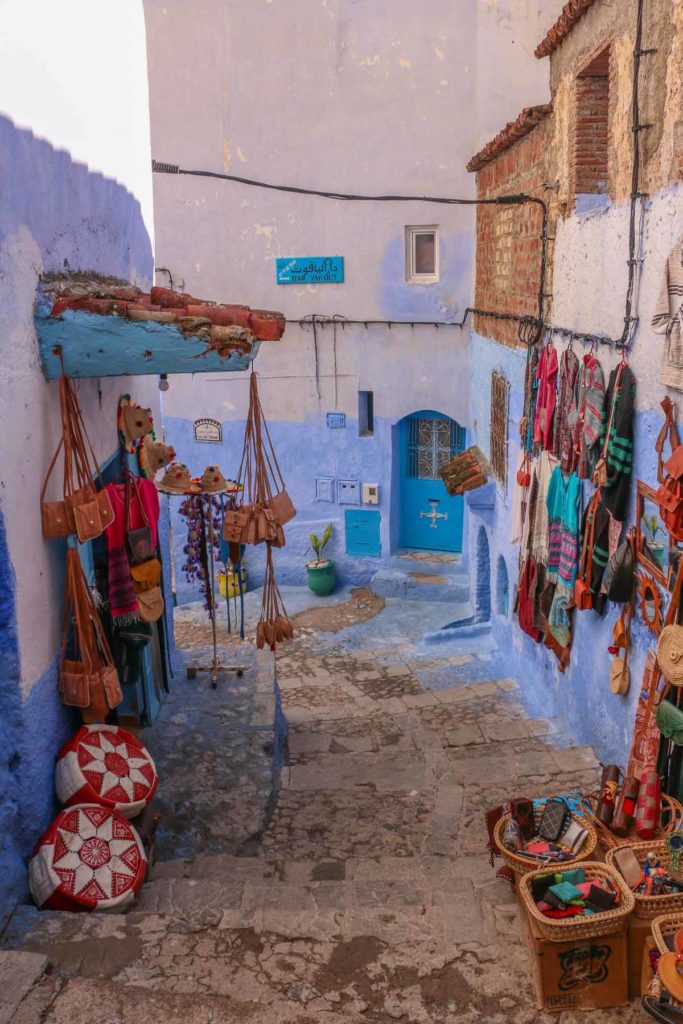
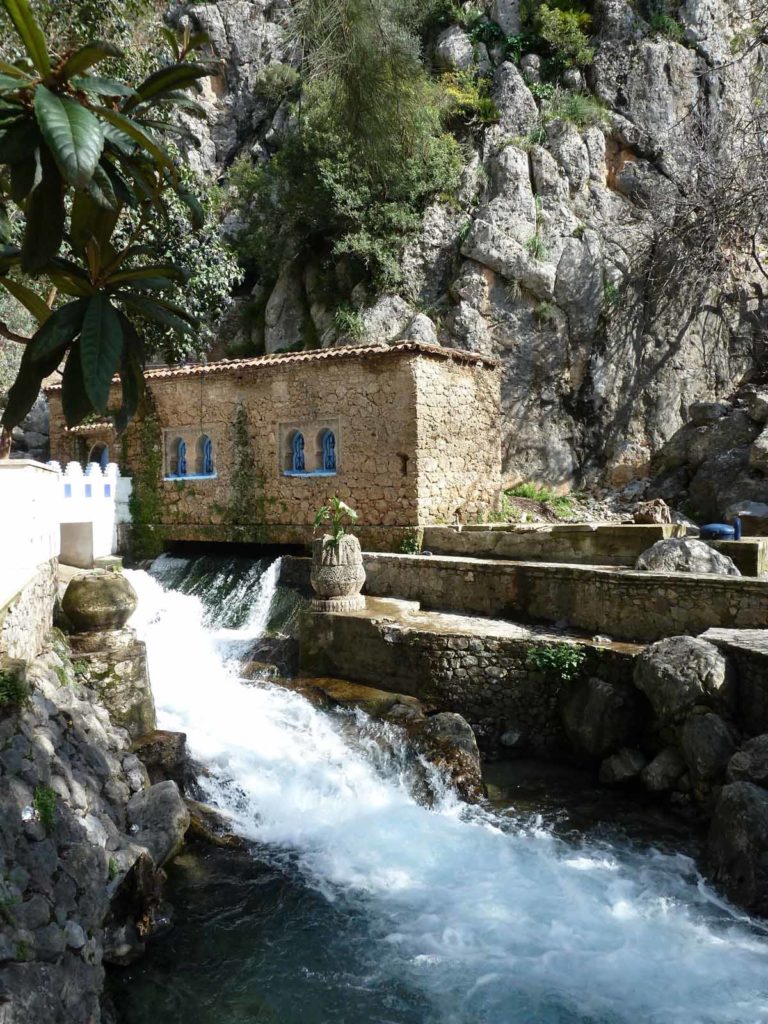
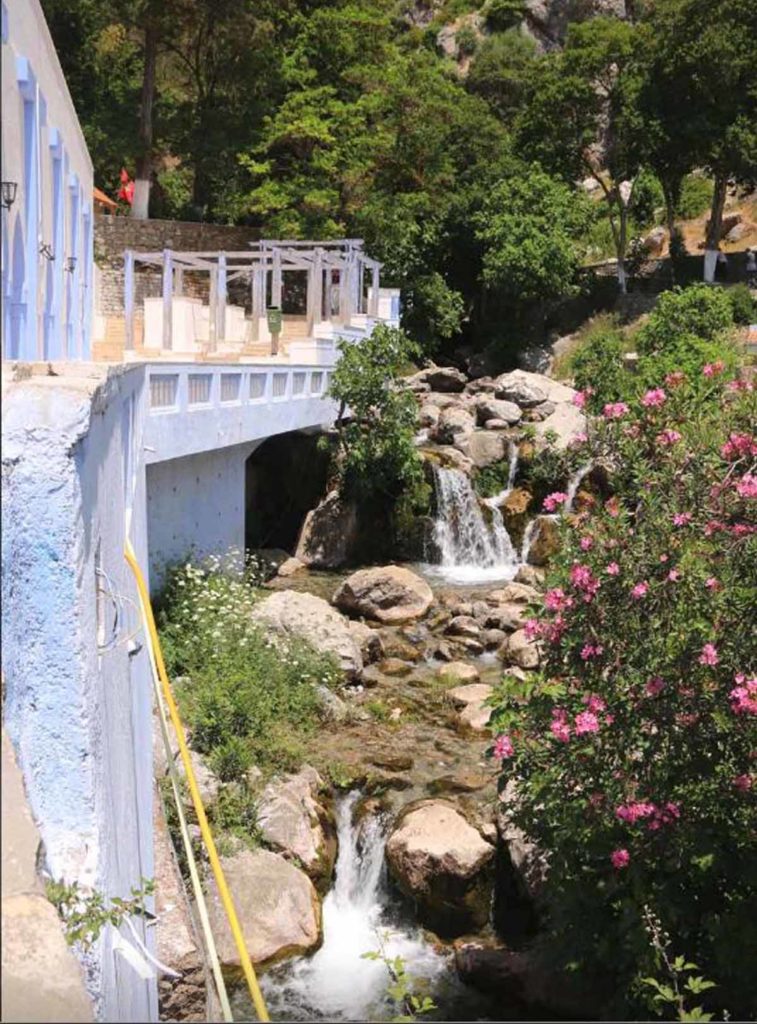
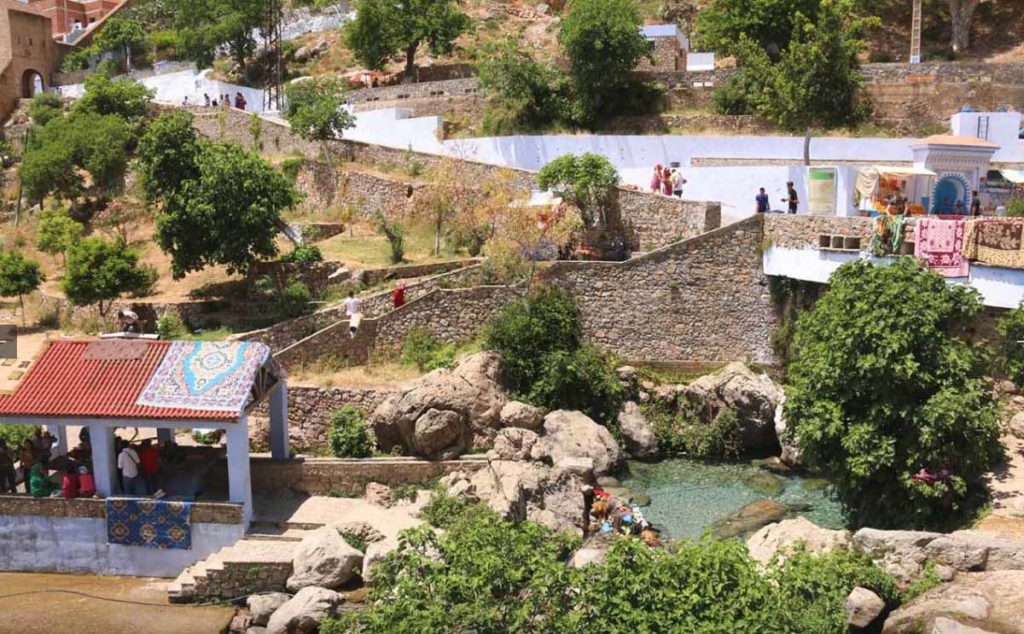
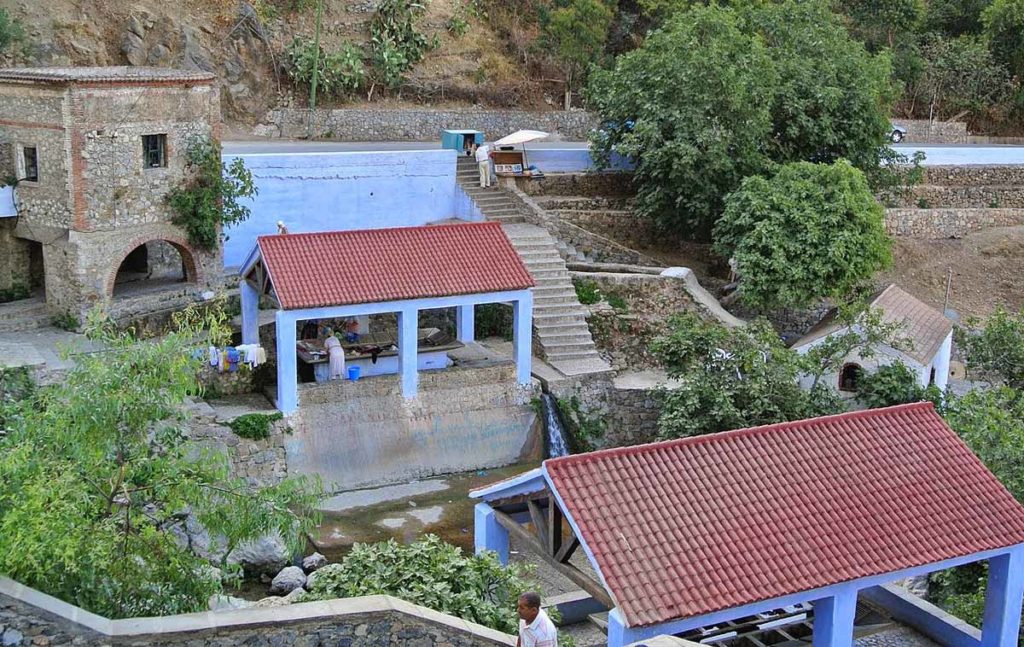
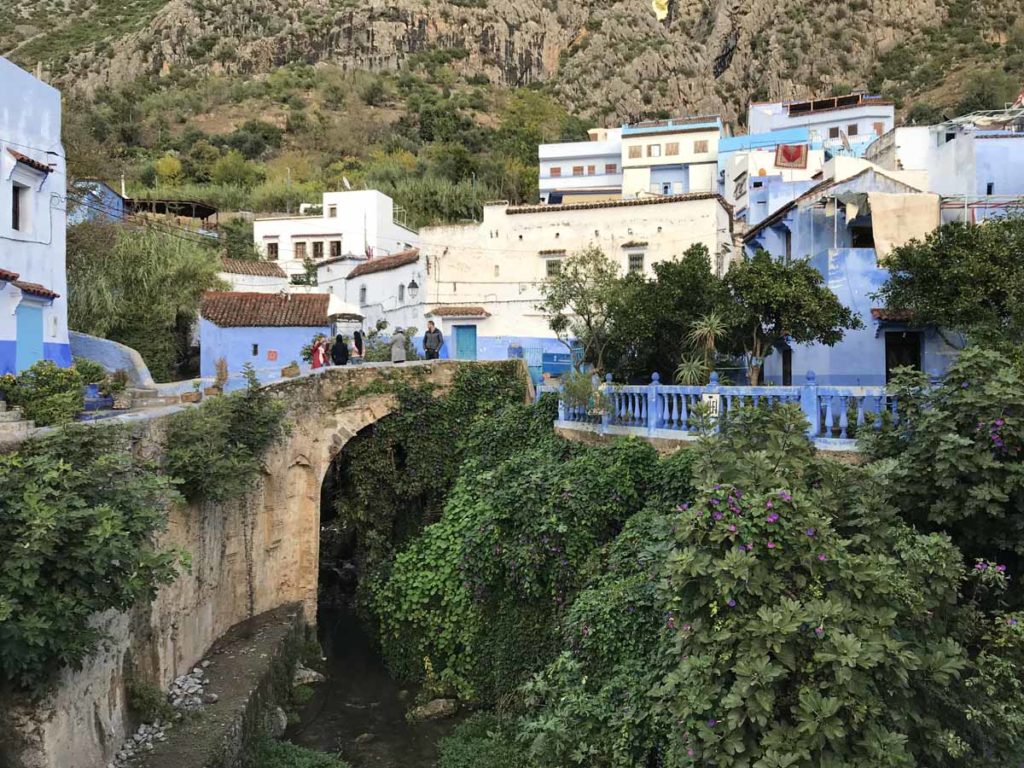
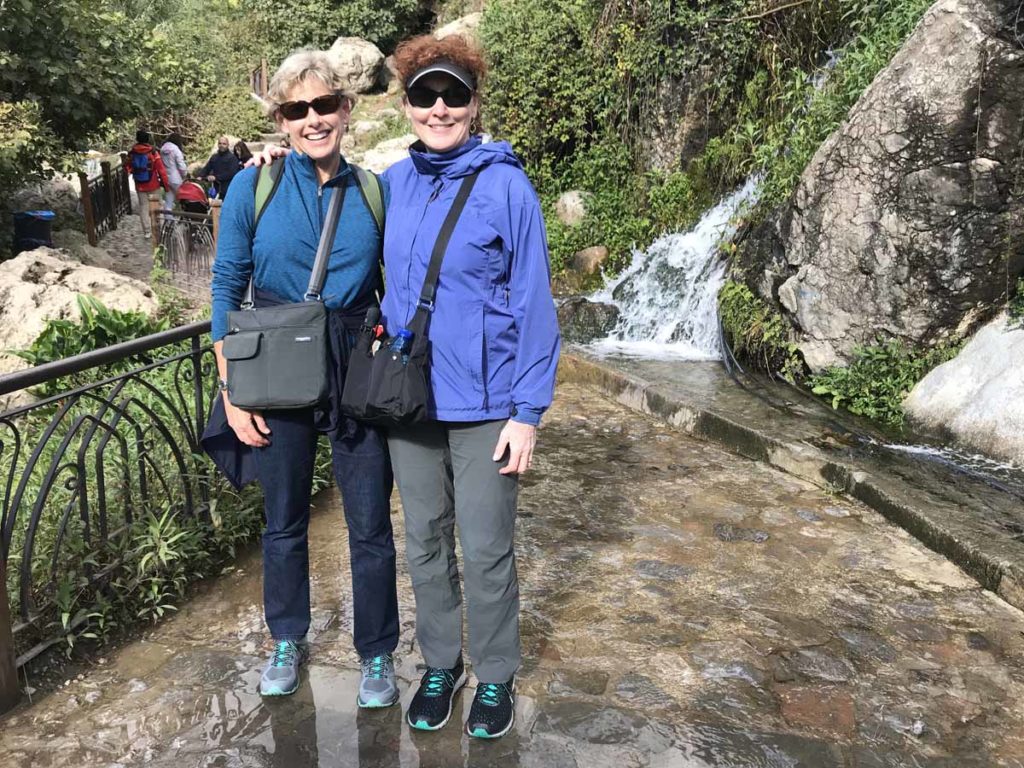
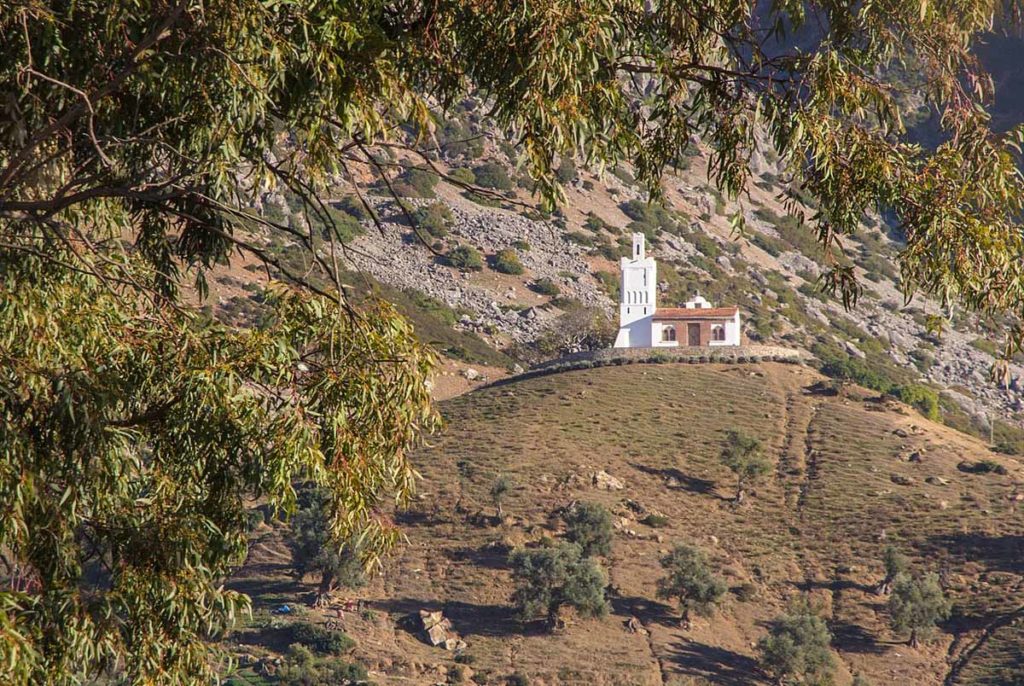
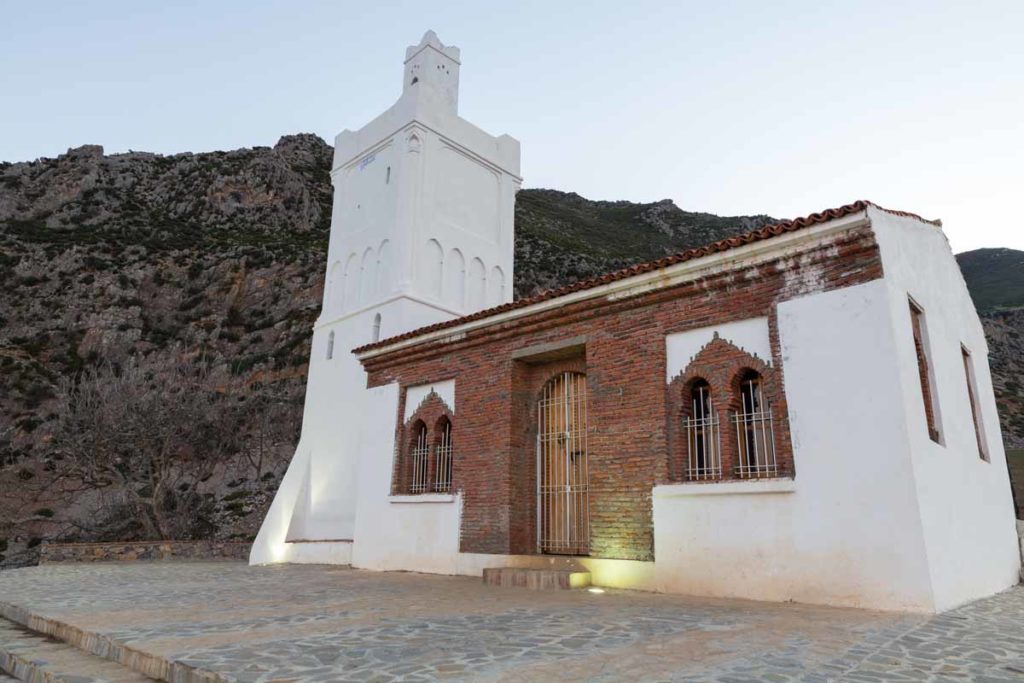
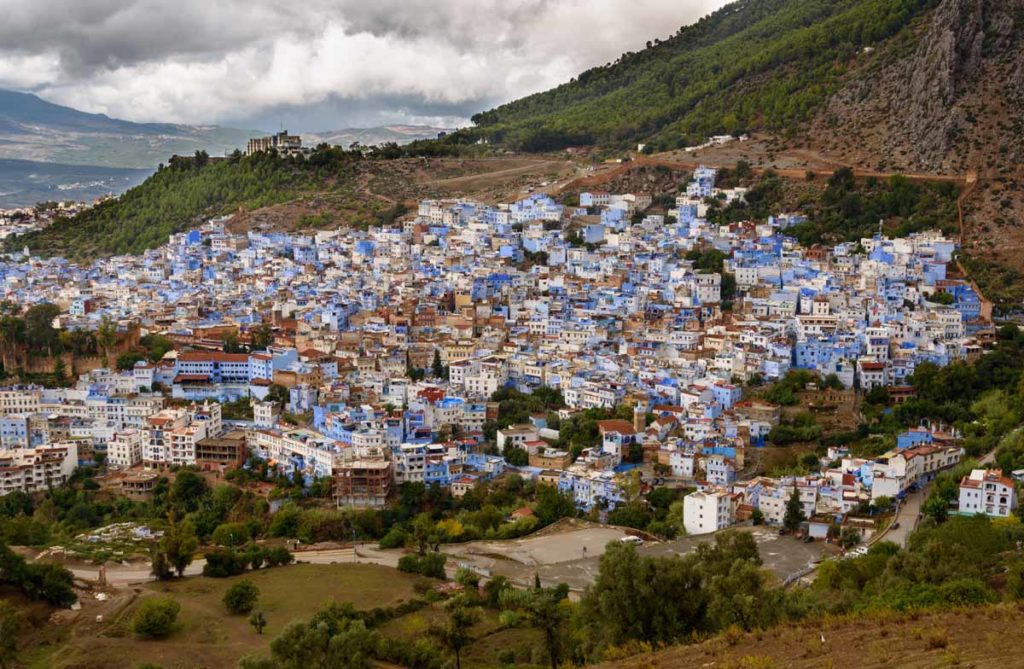
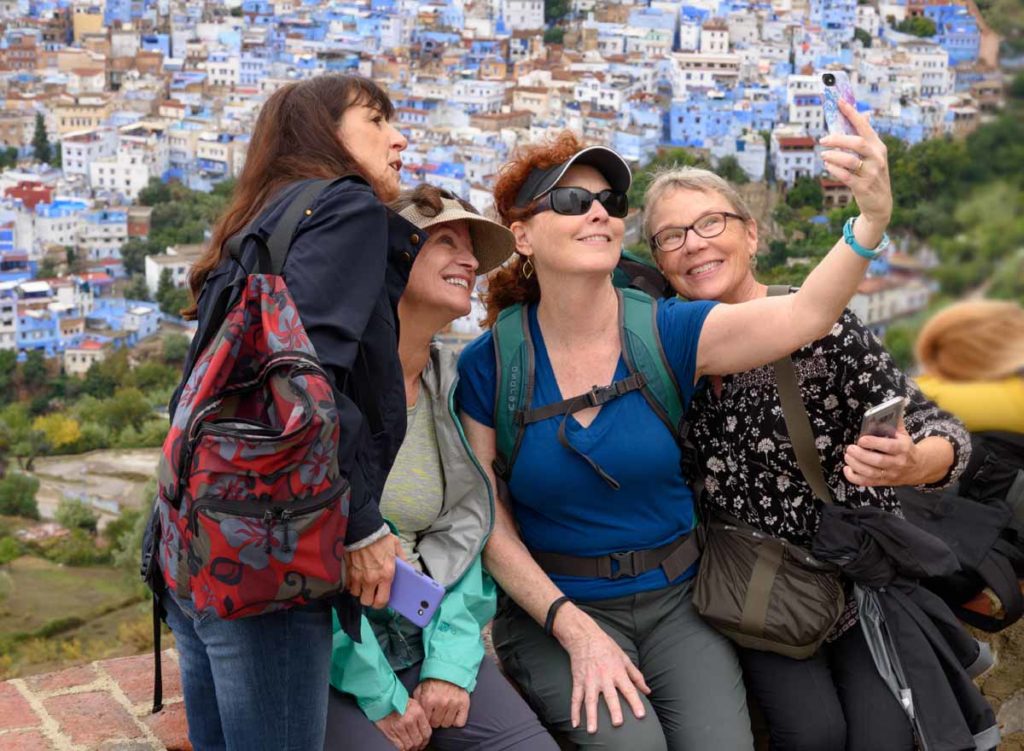
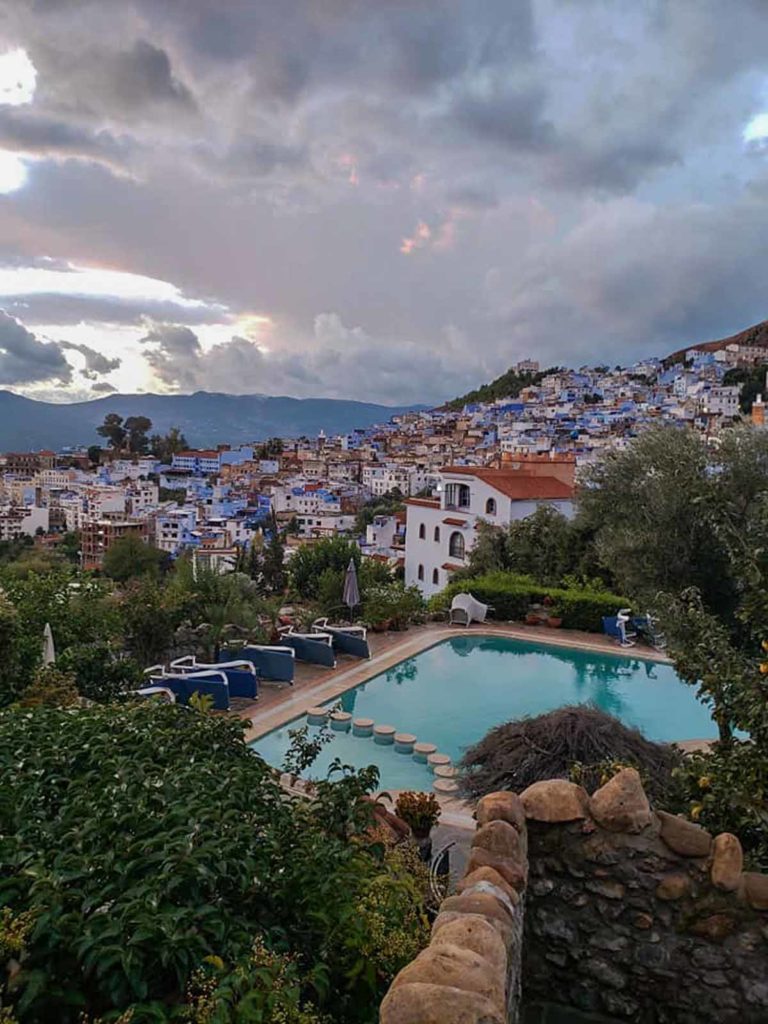
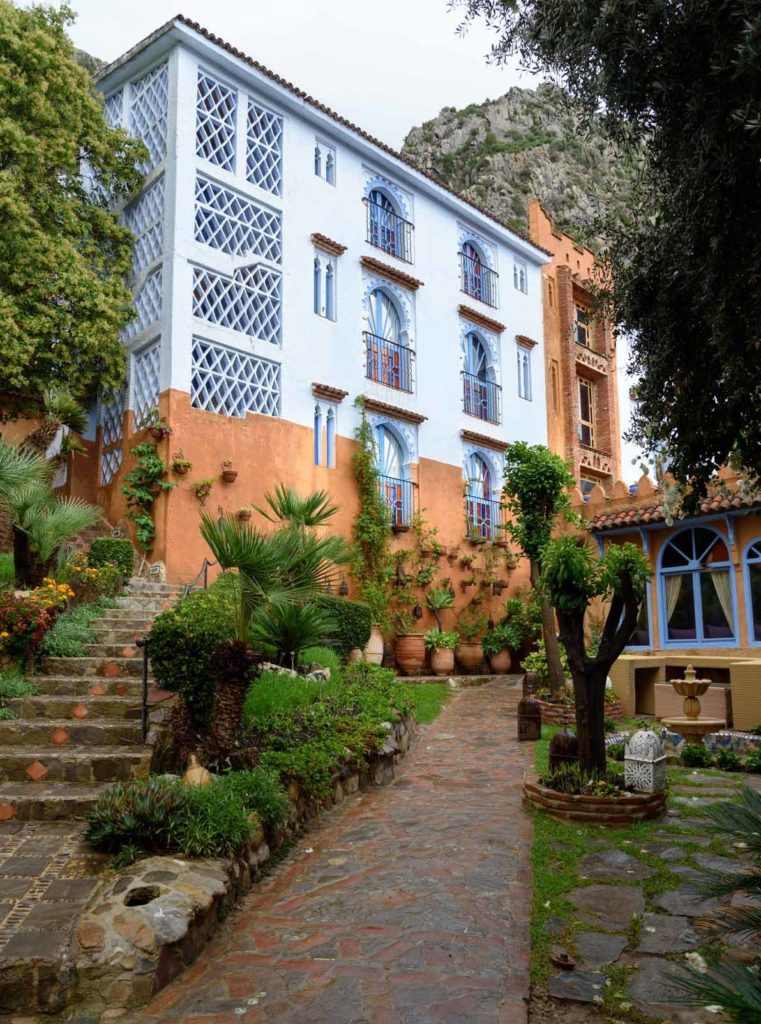
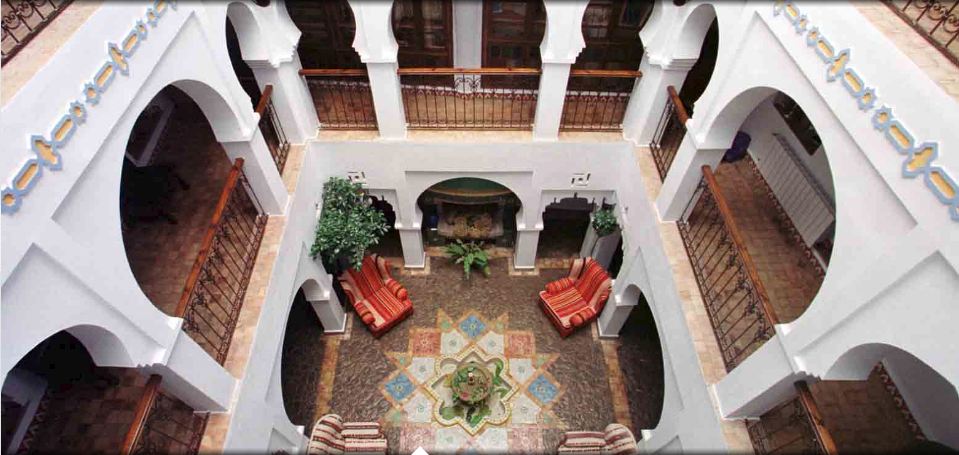
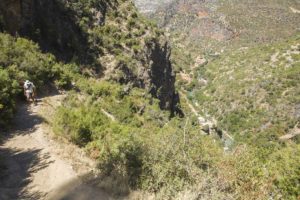
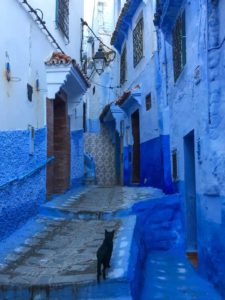
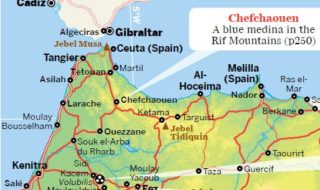
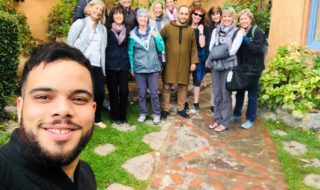
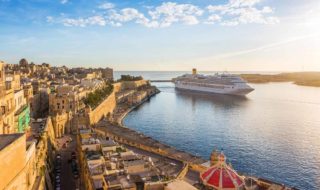
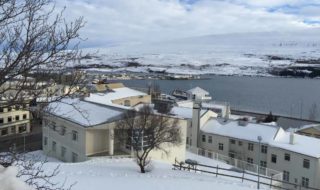
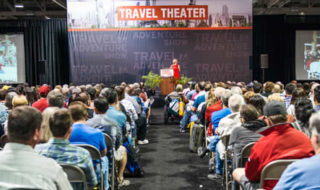
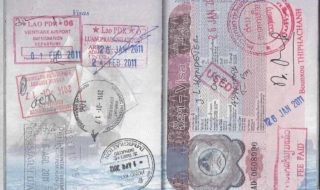
Wonderful armchair travel log, as usual, Janet. Fascinating how much detail you can include and such fantastic photos!
I’m curious about why the buildings need to be repainted 3 times a year. What kind of paint do they use?! Water colors?
Thanks, Connie. Glad you enjoyed the Chefchaouen post! You ask a great question that I can’t answer at the moment. But, I’ll email my local guide to ask him – so we’ll both know.
Connie, I got an answer from our guide Abdeslam. He said the reason for the painting is religious. And that the blue is a powder mixed with limestone.
Oh, that’s interesting. Wonder if it’s religious because it keeps people employed as painters in their town. Sharing the community resources and helping each other.
Great question and hypothesis, Connie. Don’t really know the deeper story but that sounds great to me!
Hello Janet,
I am Youssef from South Morocco, I really like your Chefchaouen article which is amazing to read. The paint is from indigo stone, powder then mixed with water and start painting. A lot of people are referring to it as the colour of the sky which is spiritual.
Thank you, Youssef for writing & providing more info on how Chefchaouen gets those beautiful blue colors. I loved visiting your country.